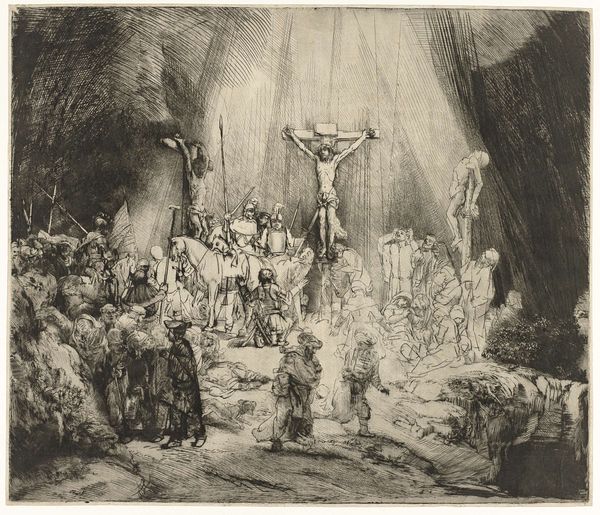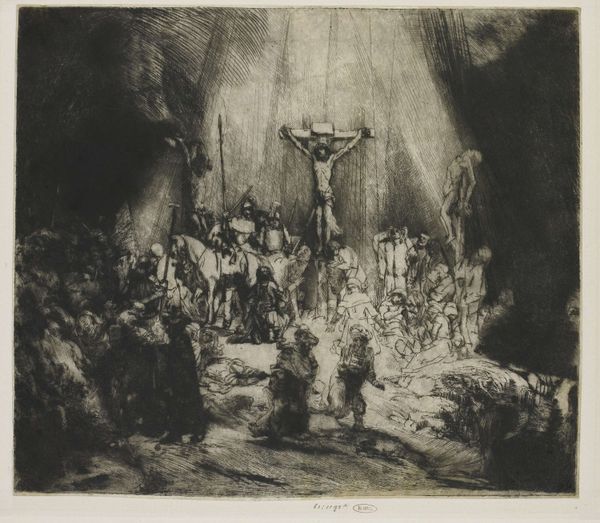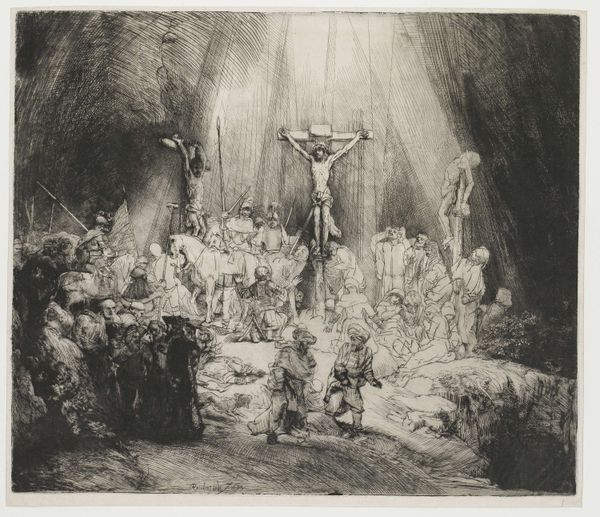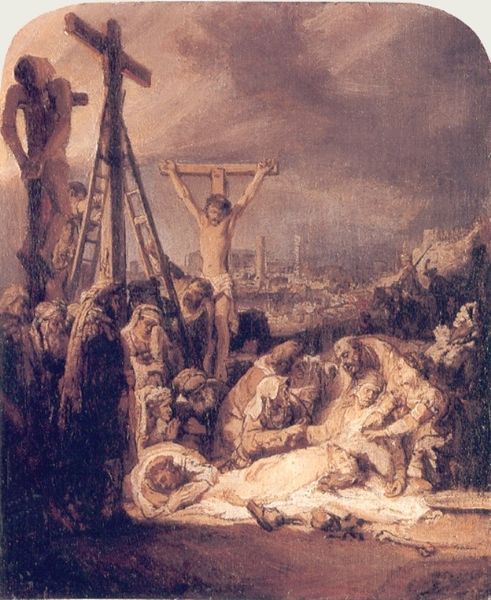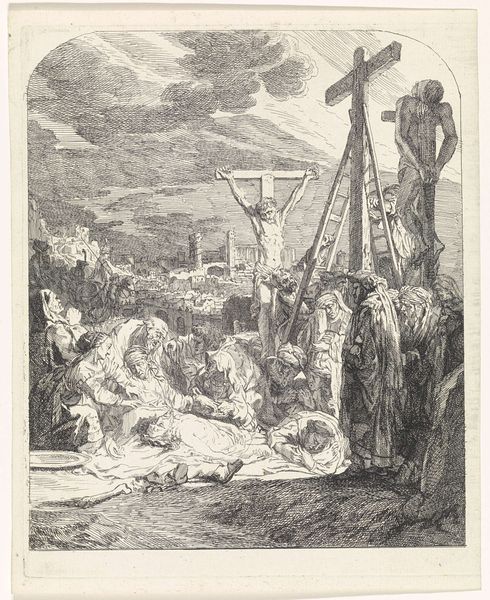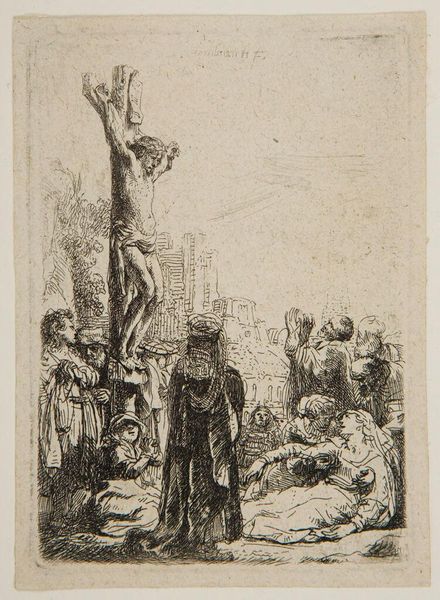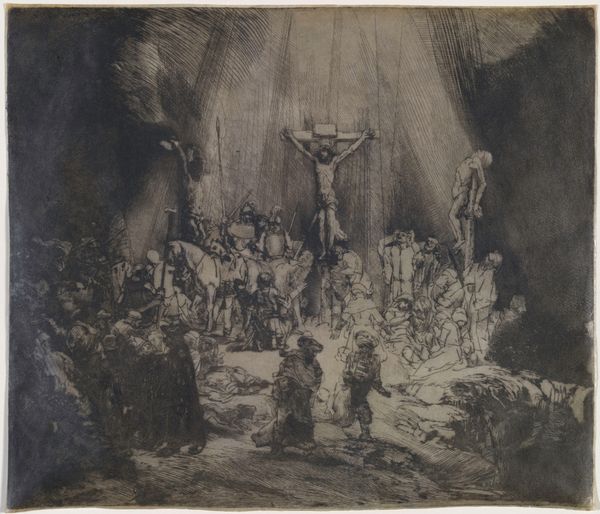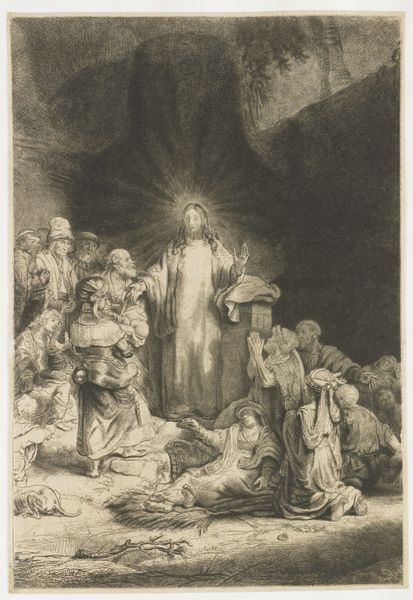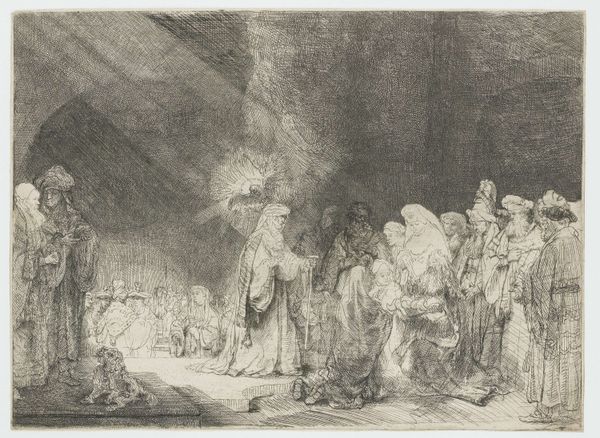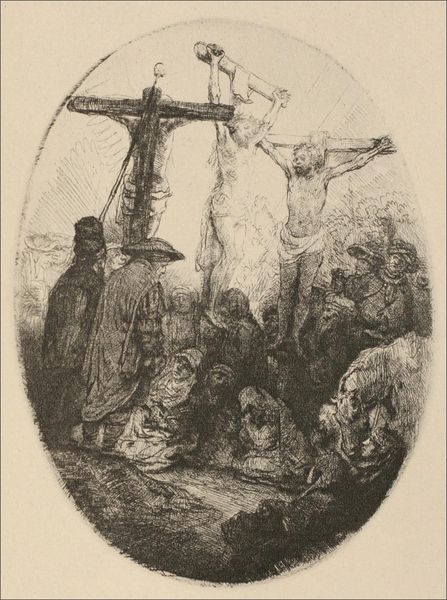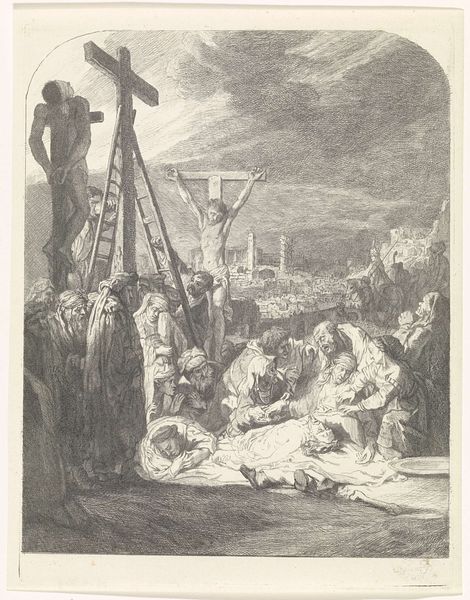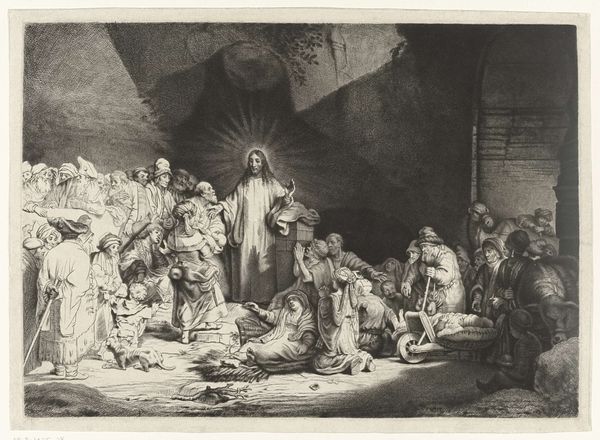
The Three Crosses 1653
0:00
0:00
rembrandtvanrijn
Fitzwilliam Museum (University of Cambridge), Cambridge, UK
print, etching
#
narrative-art
#
baroque
# print
#
etching
#
landscape
#
charcoal drawing
#
charcoal art
#
chiaroscuro
#
history-painting
#
charcoal
Dimensions: 43.8 x 38.1 cm
Copyright: Public domain
Curator: Standing before us is Rembrandt van Rijn's 1653 print, "The Three Crosses." It’s an etching, a technique where lines are incised into a metal plate with acid to hold ink. The museum purchased it fairly recently. What's your first impression? Editor: Utter darkness, really. Then, bam! Light explodes from above, concentrating on the central figure. It’s… melodramatic, theatrical, yet undeniably powerful. Curator: "The Three Crosses" is not merely a religious scene but a deeply layered narrative operating on multiple registers. Its history resides as much in 17th-century Dutch theological debates as it does in how later socio-political upheavals shaped perceptions of divine authority. Editor: So you’re saying this etching isn't just about what’s depicted, but the ongoing relationship between belief systems and worldly power? It makes you wonder about the politics embedded in chiaroscuro, the extreme contrasts he favors so strongly. Curator: Exactly. Think of it this way: Rembrandt's choices – in light and dark, the detailed rendering of some figures against the obscured masses of others – reflect an ideological landscape, not just an aesthetic one. What does it say about the relationship between power, marginality, and visibility? Editor: Good point! We're accustomed to seeing these biblical stories aggrandized but this has this underlying griminess and a focus on how collective action allowed injustice. The shadows allow for critique of the complicity. It forces a difficult confrontation with themes of power and marginalization. Curator: And think about the context in which this piece came into the collection and why people would invest so deeply into what may first look like a simple image? The narratives art sustains aren't static, and its socio-cultural impact only deepens with time. Editor: Ultimately, "The Three Crosses," in all its somber beauty, feels less like a completed declaration and more like an invitation – or perhaps a demand – to confront uncomfortable truths about humanity's failings and our role within collective action.
Comments
No comments
Be the first to comment and join the conversation on the ultimate creative platform.
